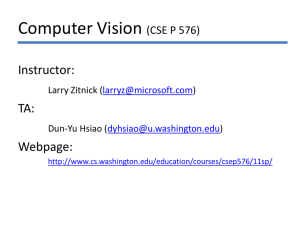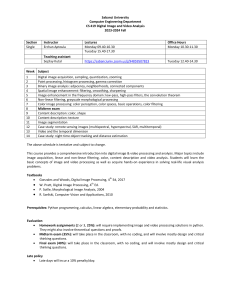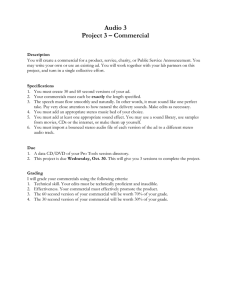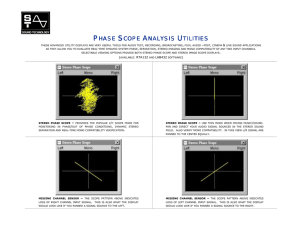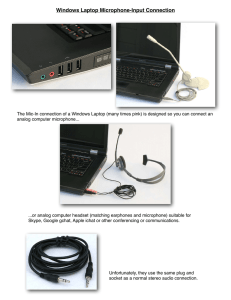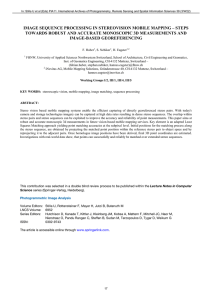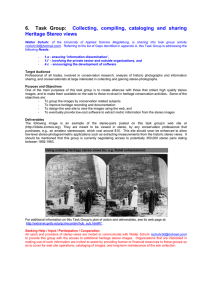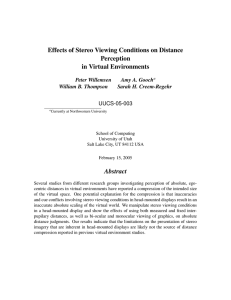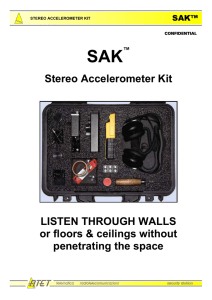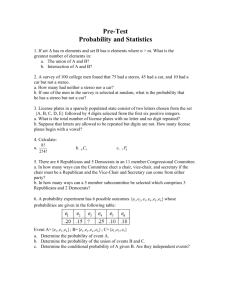Computer Vision
advertisement
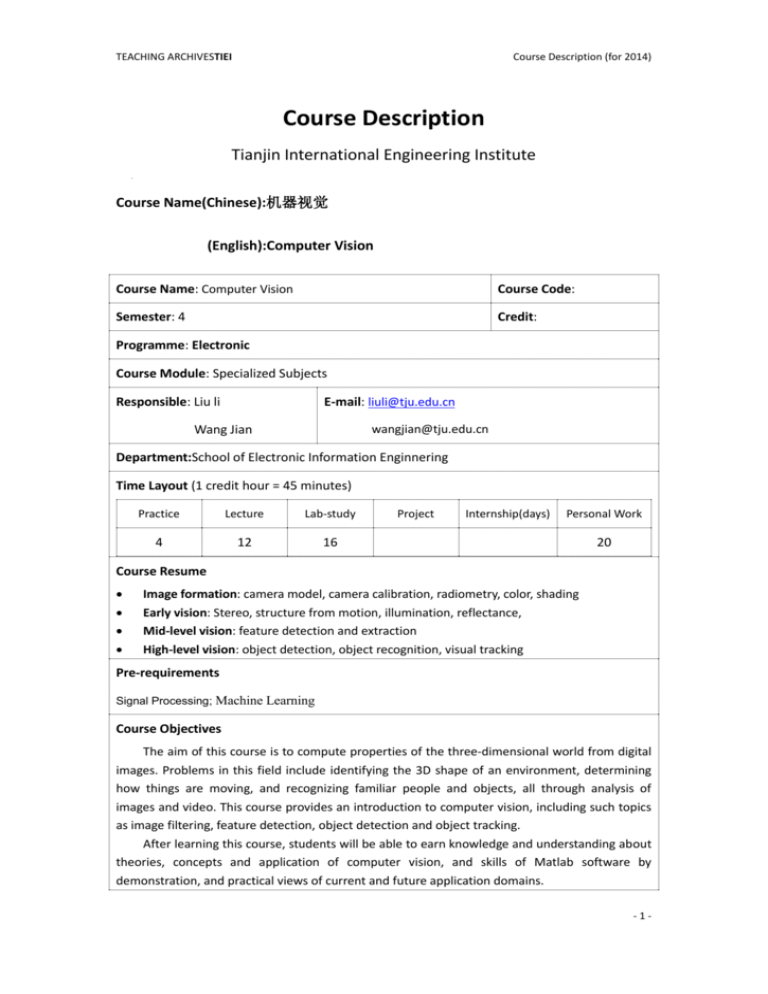
TEACHING ARCHIVESTIEI Course Description (for 2014) Course Description Tianjin International Engineering Institute Course Name(Chinese):机器视觉 (English):Computer Vision Course Name: Computer Vision Course Code: Semester: 4 Credit: Programme: Electronic Course Module: Specialized Subjects Responsible: Liu li E-mail: liuli@tju.edu.cn Wang Jian wangjian@tju.edu.cn Department:School of Electronic Information Enginnering Time Layout (1 credit hour = 45 minutes) Practice Lecture Lab-study 4 12 16 Project Internship(days) Personal Work 20 Course Resume Image formation: camera model, camera calibration, radiometry, color, shading Early vision: Stereo, structure from motion, illumination, reflectance, Mid-level vision: feature detection and extraction High-level vision: object detection, object recognition, visual tracking Pre-requirements Signal Processing; Machine Learning Course Objectives The aim of this course is to compute properties of the three-dimensional world from digital images. Problems in this field include identifying the 3D shape of an environment, determining how things are moving, and recognizing familiar people and objects, all through analysis of images and video. This course provides an introduction to computer vision, including such topics as image filtering, feature detection, object detection and object tracking. After learning this course, students will be able to earn knowledge and understanding about theories, concepts and application of computer vision, and skills of Matlab software by demonstration, and practical views of current and future application domains. -1- TEACHING ARCHIVESTIEI Course Description (for 2014) Course Syllabus 1. Introduction to computer vision 2 .Image Formation and Filtering 2.1 Cameras and optics 2.2 Light and color 2.3 Image filtering 3 .Feature Detection and Matching 3.1 Interest points and corners 3.2 Local image features 3.3 Feature matching and hough transform 3.4 Model fitting and RANSAC 4 .Stereo and Motion 4.1 Stereo 4.2 structure from motion, 4.3 Feature Tracking 4.4 Optical Flow 5 .Object recognition 5.1 Face detection 5.2 Face recognition Text Book & References Required: E.R Davies, Computer and Machine Vision - Theory, Algorithm and Practicalities (4th Edition) We may also use readings from a few reference books: David. A. Forsyth, and Jean Ponce, Computer Vision A Modern Approach (2ed Edition) Richard Szeliski, Computer Vision: Algorithms and Applications Capability Tasks CT1 CT2 CT3 CT4 CT10 Achievements To be able to use Matlabor OpenCVto do image processing and video processing - Level: M To be able to do feature detection, object detection and object tracking - Level: M Students: Electronic year 4 -2-

